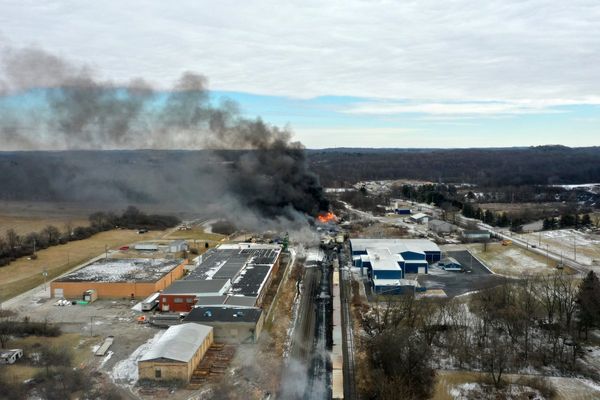
EVERY once in a while most of us become fascinated by a puzzle of some sort.
Well, I do at least. Intriguing subjects might include the baffling mystery of 5000 of Rome's finest soldiers, the Ninth Legion, totally disappearing in the mists of Caledonia (Scotland). Or it might be a strange sporting yarn, or what about the still unsolved puzzle of the Hawaii Clipper aircraft that vanished over the Pacific in 1938?
Or people might be just curious about the flooded, lost railway tunnel under Charlestown Road, Charlestown.
Today's tale is nowhere as significant. But, in its own way, might be as interesting for people who have an original artwork on their wall at home.
This yarn involves an artist with links to Newcastle in the Depression era, plus our now defunct BHP Steelworks, the World War 2 and being honoured in Canberra's National Portrait Gallery.
The artist was Robert Emerson Curtis (1898-1996) aka Robert Curtis, R.E.C and 'Cabby'. But if the name of this English born, Chile-educated (1909-1912) illustrator, graphic designer and cartoonist immediately doesn't ring a bell, you're not alone.
And this is despite the relatively 'unknown' Curtis being an official war artist in WW2, with the Australian War Memorial now holding more than 200 of his art works.
The prolific Curtis didn't start to make a name for himself until 1928, sketching the "wonder of the age", Sydney's mighty Harbour Bridge, being erected. His borrowed motto was "Make Big Plans: for little plans have no magic to stir men's blood and in themselves may never be realised."
That's where the name of Robert Emerson Curtis suddenly rang a bell for me, admittedly though very vaguely. Didn't Curtis between 1959 and 1969 also provide a striking visual record of the building of Sydney's iconic Opera House? Indeed, he did. His skilful lithographs were even published (in 1967) in the book, A Vision Takes Form - Sydney Opera House.
But what's any of this to do with Newcastle?
Today's yarn started from an article I wrote a few weeks ago about the last vestiges of 'Hollywood'. This once famous shanty town site in bush above the present Jesmond roundabout was being bulldozed to make way for the fifth and final section of Newcastle's inner-city bypass. Hollywood (existing from the 1920s until 1960) was probably the longest surviving shanty town settlement in Newcastle. In 1956, a survey revealed it housed 137 people.
But it was only one of about six camps for the homeless and jobless in the Lower Hunter, including one big one surprisingly at Nobbys, during the 1930s Great Depression.
I received an email from Newcastle's Keith Parsons, a former president of the Hunter branch of the National Trust and a collector of historical items.

"Your (recent) article reminded me that I have a framed sketch of the Nobbys Depression era camp. It's drawn in pencil by English artist Robert Emerson Curtis in 1934," Parsons wrote.
Curtis had come specifically to Newcastle at BHP's invitation to document the-then growing steelworks.
"I think his sketches then appeared in a book, perhaps of BHP's golden anniversary. Curtis also drew other aspects of Newcastle as well. A second (unknown) 1934 drawing of his I have is a pencil sketch of Wolfe Street, Newcastle, looking down towards the harbour," he wrote.
Parsons' initial research into the artist's life revealed that in 1922 Curtis had sailed to America to further his career as a freelance commercial artist. On that voyage, his cabin-mate was his great friend and pioneer Aussie filmmaker Charles Chauvel.
Parsons said that when he bought his two, possibly now unique, artworks at a Newcastle art gallery in the late 1980s or early 1990s, he'd realised their local historical significance. He said that because of this, he'd probably eventually donate them, especially the sketch of Nobby's unemployment camp in 1934, to the Newcastle Art Gallery as a reminder of a bad past era, sometimes called 'the hungry thirties.
The Nobbys pencil sketch shows eight huts built of sheets of corrugated tin with hessian-bag walls and lean-to verandas propped up by timber poles. All this is against a city and harbour backdrop under threatening skies. A closer examination of the sketch of Nobbys Camp though reveals telling detail. For example, at top left and easily overlooked, a man is watering his mini-vegetable garden with a seated woman nearby, possibly peeling spuds, on their veranda. The crudely-painted painted sign above her reads: 'Nobby Camp - meals at all hours' proving that, despite hardships, free enterprise was alive and well.
Around this time, Nobbys Camp (in reality a Horseshoe Beach camp) had 144 residents who lived in 81 shacks, humpies or tents. The "village" was demolished in 1937 as war loomed. The site is now Shortland Park, beside Nobbys Beach.
This rare Curtis pencil sketch may be one of only five known public images of Nobbys Camp in the 1930s.
"I bought both sketches either from late gallery owner Anne von Bertouch, or from Mark Widdup at Cooks Hill Galleries (CHG)," Parsons said.
CHG director Mark Widdup said later he'd sold Curtis artworks over the years. However, they didn't come onto the market as frequently now as they did in the 1970s or 1980s.
Widdup said people now seemed to keep Curtis artworks as they were "fairly rare".
"I might have one still in stock. They are very detailed. They are like an early Lloyd Rees or a George Lambert. A beautiful technique. That's why they are treasured," he said.
Besides sketching the old, gritty Newcastle BHP scene and the 'warts-and-all" Nobbys Camp in 1934, Curtis also drew a view of distant Nobbys from the Newcastle Club, plus industrial scenes in Port Kembla.
One of his other valued but probably almost unknown artworks done in the Hunter was a sketch of Lake Macquarie during WW2. It shows the ribs of a wooden freighter being built at Boyd's Yard at Swansea.
Robert Curtis died aged 97 in March 1996. By then he must have achieved all his goals. Besides publishing five books, he'd even once hired legendary Aussie aviator Charles Kingsford-Smith to fly him around the harbour, sketching the now almost complete Sydney bridge.
WHAT DO YOU THINK? Join the discussion in the comment section below.
Find out how to register or become a subscriber here.







